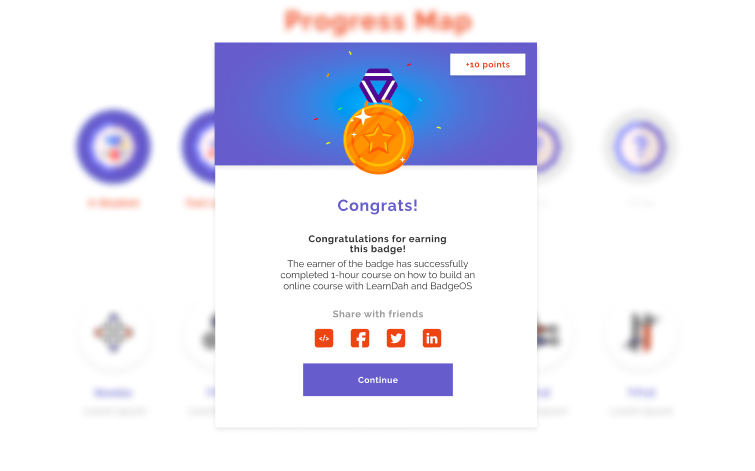The term “eLearning” was first coined in the late 1990s and is short for “electronic learning,” which is defined as the use of technologies such as computers, audio-visual equipment, and satellite systems for teaching and learning.
With the increasing demand for online learning, the industry is changing at an exponential rate. This is because of the increasing use of mobile devices, and the advancements in technology. The online learning industry is also becoming more diverse and inclusive with the inclusion of social media, gamification, and virtual reality. As a result, learning management systems have been evolving to accommodate the needs of learners and instructors.
With all these changes, it’s essential to stay up-to-date with what is happening in the online education industry. In this article, our team of LMS consultants will explore what are some of the most popular e-learning trends to date:
Artificial Intelligence
Artificial intelligence can be used to develop personalized learning systems that can improve learner engagement and retention rates. AI-powered e-learning platforms are able to analyze data from learners, such as their progress, time spent on learning activities, and time spent on each topic. These systems then use this data to create personalized learning paths or suggestions for learners. This is not only more engaging for learners but also helps them learn more effectively because they are being taught at a level that matches their skills.
You can also improve the instructors’ experience on your online courses using artificial intelligence by integrating cheating detection technology or automatic grading software.
Micro-learning
it’s no secret that our attention spans are getting shorter and shorter with time. As a result, keeping your students’ interest throughout an hour-long lecture has become a nearly impossible feat. So, what can you do to improve learning engagement? Enter micro-learning.
Micro-learning is becoming a rising trend in e-learning and consists of delivering courses through bite-sized chunks of content. You can implement micro-learning no matter the content type used in your courses. The only requirement: keep it short and sweet. Here are some examples:
- Record 5-minute long video lessons;
- Break down longer written lessons into smaller 1-2 paragraph long lessons;
- Add quick 5-10 question quizzes after each section;
- Create infographics summarizing course content for your students to quickly review.
The best part about this e-learning trend is that you won’t have to go to extraordinary ends to implement it. Simply repurposing the content you already have and breaking it down into smaller, easy-to-digest bits will do.
eLearning Analytics
E-learning analytics is the collection and interpretation of data to evaluate the success of an online course. Different metrics allow course creators to monitor students’ activity, engagement, and performance. This information allows them to easily identify their platform’s strengths and areas of improvement in order for them to make the necessary adjustments to promote student success.
For this reason, learning management systems have been incorporating robust reporting capabilities. However, when these are too limited, course creators can also opt for working with a specialized LMS developer to add or extend existing reporting features on their e-learning sites.
Gamification
Gamification is one of the most popular e-learning trends today and involves the use of game-like elements in a learning environment. The power of games and game mechanics is that they can be integrated into any type of learning experience and across all subject areas. It also has been shown to increase engagement, motivation, and knowledge retention. In fact, according to research, 67% of students found gamified learning more motivating and engaging than its non-gamified counterpart.
Gamification can be used in a variety of ways to engage learners with your content. Some common gamification techniques are:
- Badges – which can be awarded for accomplishing tasks or reaching milestones such as completing a lesson or passing a quiz;
- Points – which learners can earn by completing certain activities on the course or based on good performance;
- User ranks – used to establish a hierarchy among your students giving special recognization to those with better grades or most accomplishment
- Quests – giving learners a learning path to follow with a clearly defined goal.
- Leaderboards – which rank learners on their performance and create a healthy sense of competition.

Ready to put online course gamification into practice? Get started with these 4 LMS gamification strategies to boost course completion rates.
Mobile-based Learning
People are using their mobile devices more than ever before, and relying on them as the first resource for everything from reading the news to finding the closest coffee shop. Education is no exception.
There are many reasons why students are now opting to use their mobile devices to learn. One of the main ones is the flexibility mobile learning provides, as students can easily study on the go. Furthermore, students can conveniently access their learning materials wherever they are, so they can quickly review or brush up on lessons as is more convenient to them.
Social Learning
Social learning is a type of learning that relies on the social interactions of learners. It is a process where people learn together in interactive, collaborative, and dialogic ways. This is typically easier achieved in a real-life classroom setting, where social interactions between peers occur naturally. However, with the development of new technologies, LMSs are rapidly evolving to integrate social aspects into a digital setting.

Some features that promote social learning in online courses include group chats, group assignments, and live workshops. You can also add activity timelines or progress bars where students can keep track of each other’s progress, enable features where students can react or comment on each other’s assignments or hold discussions using forums.
Put These E-learning Trends To Practice
Are your online courses ready for 2022 or are they stuck in the past? No matter if you run an educational institution, corporate training program, or act as an independent educator, adapting to the latest trends is essential to sustain the success of your online course business for the coming years.
If you’re interested in implementing these novel e-learning trends to your eLearning site but don’t know how to set them up, reach out to our LMS development team. After completing over 300 projects for educators worldwide, we’ll get your site modernized in no time!




